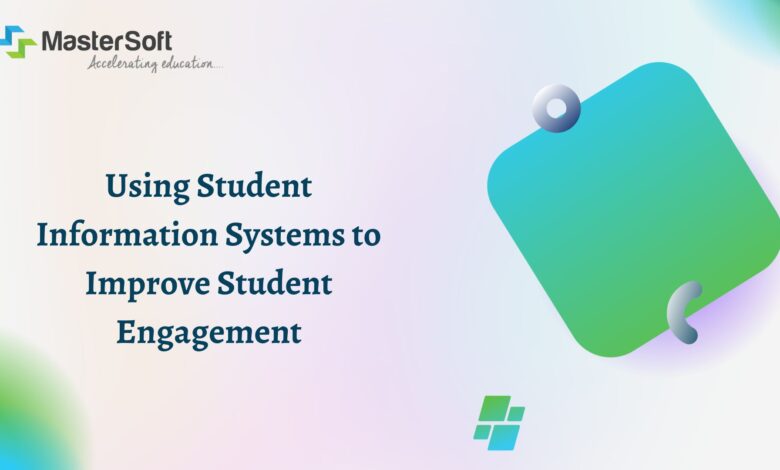Using Student Information Systems to Improve Student Engagement
Using Student Information Systems to Improve Student Engagement

In today’s rapidly evolving educational landscape, the role of technology in enhancing student engagement and academic success cannot be overstated. Student Information Systems (SIS) have become an integral part of educational institutions, providing a comprehensive solution to manage student data. Beyond their administrative functions, SIS has proven to be a powerful tool for improving student engagement. In this blog, we will delve into how SIS can be harnessed to boost student engagement, ultimately leading to improved learning outcomes.
Understanding Student Information Systems
Before we explore the impact of School management software on student engagement, it’s essential to understand what Student Information Systems are. SIS is a comprehensive software solution that collects, stores, and manages various student-related data, including demographic information, attendance records, grades, schedules, and more. These systems streamline administrative tasks, allowing educators to focus on teaching and students to concentrate on learning.
How SIS Improves Student Engagement
- Personalized Learning
One of the most significant ways SIS improves student engagement is through personalized learning experiences. SIS gathers data on each student’s academic performance, attendance, and participation in various activities. Educators can use this information to tailor their teaching methods to meet individual student needs. By creating customized learning plans, students are more likely to remain engaged and motivated as they see their progress and efforts recognized and supported.
- Communication and Collaboration
SIS often comes with built-in communication tools that facilitate seamless interaction between students, teachers, and parents. Timely and effective communication can help students feel more connected to their teachers and classmates. It enables quick responses to queries and concerns, making students more comfortable in seeking help and participating in class discussions. Collaboration tools within SIS also promote group work and team projects, fostering a sense of belonging and engagement.
- Real-time Progress Tracking
SIS provides students with real-time access to their academic progress, including grades, attendance, and assignment submissions. When students can monitor their progress and understand their strengths and weaknesses, they become more accountable for their learning. This transparency empowers students to take ownership of their education and motivates them to make necessary improvements, increasing their overall engagement.
- Streamlined Administrative Tasks
By automating administrative tasks, SIS allows educators to devote more time and energy to teaching. When teachers can manage grading, attendance, and communication efficiently, they can create more engaging and interactive lessons. This results in a more engaging classroom environment that benefits all students.
- Parental Involvement
Parental involvement is crucial for a student’s academic success. SIS enables parents to stay informed about their child’s academic performance, attendance, and overall well-being. This transparency fosters collaboration between parents and teachers, creating a support network that ensures students remain engaged and motivated.
- Early Intervention
SIS can be used to identify students who may be struggling academically or emotionally. By tracking various indicators, such as attendance patterns or declining grades, educators can intervene early to provide the necessary support. Early intervention not only helps prevent students from disengaging but also ensures they receive the assistance they need to succeed.
- Data-Driven Decision Making
SIS provides educators with valuable data and insights into student performance. By analyzing this data, educators can make informed decisions about curriculum, teaching methods, and student support services. This data-driven approach allows institutions to continually improve their engagement strategies and adapt to the changing needs of their students.
Challenges and Considerations
While Student Information Systems offer numerous benefits, there are some challenges and considerations to keep in mind:
- Data Privacy: Maintaining data privacy and security is crucial when working with SIS, as it contains sensitive information about students. Institutions must implement robust data protection measures to safeguard this information.
- Training and Adoption: Educators and staff need proper training to use SIS effectively. Ensuring that all stakeholders are comfortable with the system is essential for maximizing its benefits.
- Integration: SIS should be seamlessly integrated with other educational technology tools and platforms to provide a holistic view of a student’s educational journey.
- Customization: Institutions should have the flexibility to customize their SIS to match their specific needs and objectives. A one-size-fits-all approach may not be suitable for every institution.
Conclusion
In an era where student engagement and academic success are of paramount importance, Student Information Systems have emerged as powerful tools for educators. By providing personalized learning experiences, facilitating communication and collaboration, and enabling data-driven decision-making, SIS can significantly improve student engagement. However, it’s crucial to address challenges related to data privacy, training, integration, and customization. When leveraged effectively, SIS can transform the educational experience, fostering a culture of engagement, motivation, and success among students. As technology continues to advance, SIS will likely play an even more significant role in shaping the future of education.



